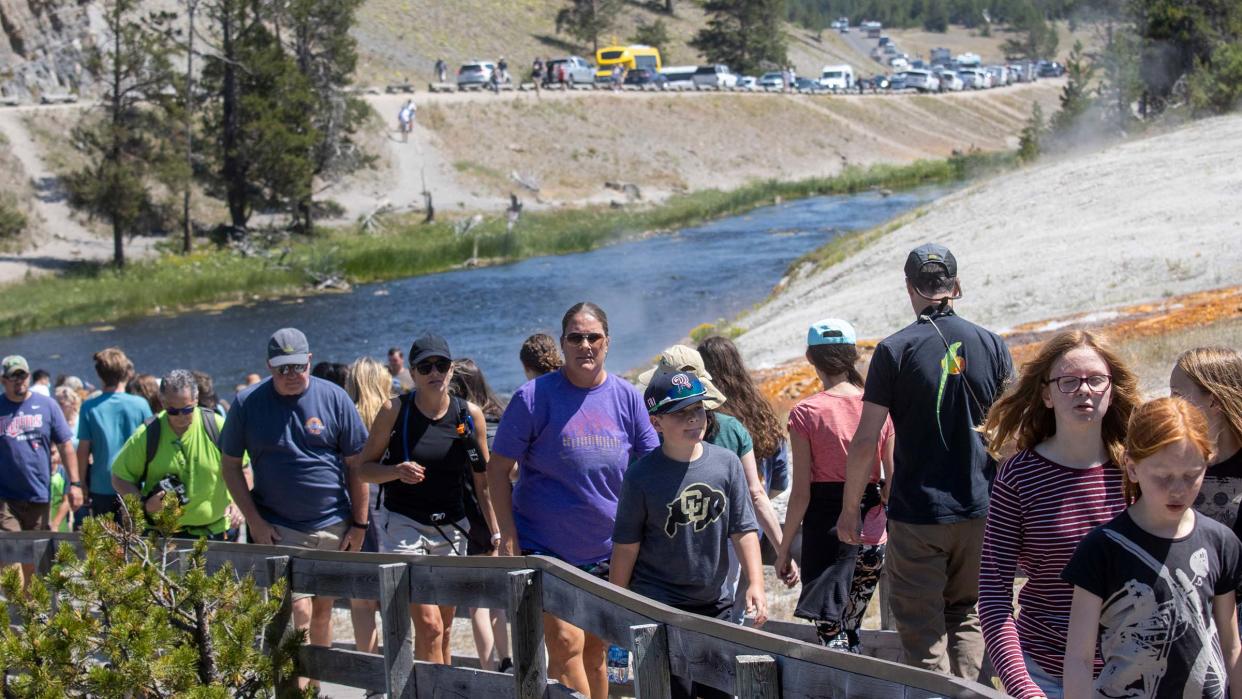National Parks Are More Crowded Than Ever—and Two Senators Think Tech Is the Solution

Overcrowding in the national parks has become a serious enough issue that even Capitol Hill is talking about it. In July 2021, the Senate Committee on Energy and Natural Resources held a hearing on the issue, listening to testimony from a gateway town chamber of commerce and the National Parks Conservation Association and bandying about solutions. Now, two of the members of the committee have introduced what they hope will be the first step toward fixing the parks’ crowding problem.
Introduced by Senators Angus King (I-ME) and Steve Daines (R-MT), the Gateway Community and Recreation Enhancement Act would create a pilot program that provides real-time updates on crowd levels for park and federal land visitors, so they could decide when and where to visit. The program would also encourage visitors to recreate on other, less-trodden spots near their planned destinations, with an eye toward spreading out crowds. In a press release, King described the proposed program as “Waze for parks.”
The program would roll out to 20 parks and other federal land management units at first--15 managed by the Department of the Interior, the agency in charge of the National Park Service and Bureau of Land Management, and five to the U.S. Department of Agriculture, which heads up the U.S. Forest Service--and would expand to 80 units total within five years.
"As parks experience record levels of visitation, the Senate Subcommittee on National Parks has engaged with recreation officials to help more people experience these treasures - while being careful to prevent a crush of enthusiastic visitors from loving these lands to death,” King wrote. “Today's bill is part of that effort, working to share data in real time so potential visitors can enjoy the beauty without the crowds.”
While national park visitation has been rising for decades, the Covid-driven boom in outdoor recreation has kicked its growth into overdrive. In 2021, Great Smoky Mountains National Park saw 14.1 million visitors, beating its own prior record, set in 2019, by 1.4 million. In April 2021, Yellowstone received 40 percent more visitors and Grand Teton received 48 percent more than it did the same month in 2019. Faced with growing lines and full parking lots, some parks like Rocky Mountain and Arches have turned to timed reservation systems during the high season. Others, like Glacier, have stopped short of that, but still required advance reservations for some popular areas within the park.
Still, some advocates have cautioned that spreading out the crowds may not relieve the pressure on the park system as long as it continues to be underfunded and understaffed. Speaking at last year’s hearing, Kristen Brengel, senior vice president of government affairs for the National Parks Conservation Association, noted that staffing numbers at national parks and other federal lands has stayed relatively flat even as visitor numbers have skyrocketed. She also warned that parks might suffer “unintended consequences” if they receive crowds that they’re not ready for.
Park overcrowding has been an uncommon point of agreement for the Committee on Energy and Natural Resources, which has clashed on everything from Biden’s Interior Department nominees to oil and gas development to national monuments. In the press release announcing the bill, Daines noted that it’s not just the visitor experience at popular parks that is suffering due to crowds; gateway communities are beginning to creak under their weight as well.
“While increased recreation on our public lands and national parks supports jobs and boosts local economies, it can also put strains on communities, housing and employees,” Daines said. “We must work to address these concerns and support the needs of our gateway communities that in turn will help boost local economies and preserve our public lands for future generations.”

